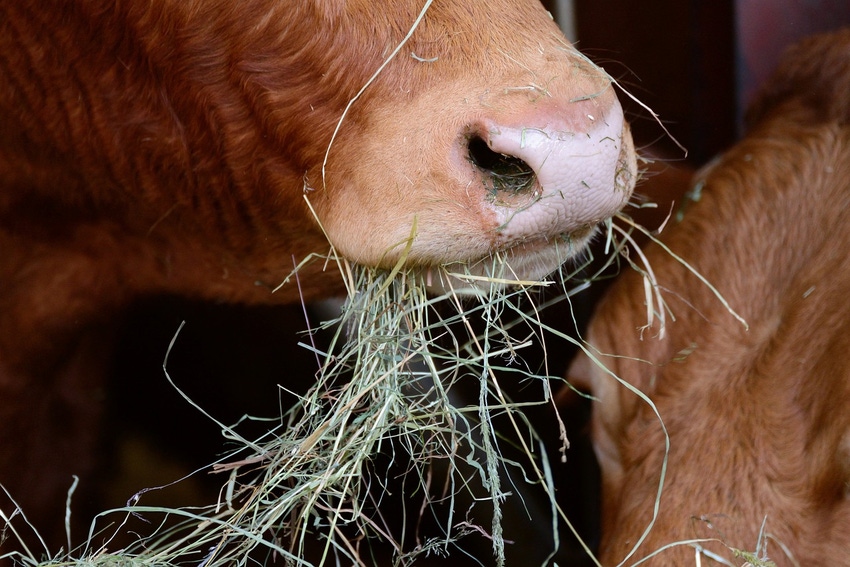Vitamin A concerns in the Southern Great Plains
Veterinarians have expressed concern about potential link of inadequate Vitamin A to stillborn births.
July 25, 2023

Vitamin A is considered by many nutritionists and veterinarians to be the most important supplemental vitamin required in beef cattle production. Over the last 12 months, numerous veterinarians throughout Oklahoma, Texas, Kansas, and Colorado have expressed concern about stillborn births and a potential link to inadequate Vitamin A.
Plant materials contain the provitamin carotene that is converted to active Vitamin A by the animal. Green, leafy forage, green hay, dehydrated alfalfa meal, and yellow corn are examples of rich sources of carotene. Lush, immature forage is especially high in carotene concentration. However, carotene is destroyed rapidly as the plant matures with exposure to sunlight, air, and high temperatures. Vitamin A activity also declines over time in stored harvested forage. Cattle do have the capability to store Vitamin A in the liver, although this supply can only last two to four months when a dietary deficiency exists. Therefore, this year in particular, cow/calf operations in the Southern Great Plains region should be diligent in making sure cows receive adequate supplemental Vitamin A this winter and spring.
Where other nutrient requirements are expressed as a percent of the diet or as parts per million (ppm), vitamin requirements are generally expressed in international units (IU). Table 1 shows Vitamin A requirements for different classes of beef cattle.

Most commercial feed and mineral products have historically included 100% or more of the Vitamin A requirement. Recently harvested, high quality hay may contain 50% to well beyond 100% of the Vitamin A needed. However, some studies show a decline in carotene by 50% or more after seven months of storage. Cattle grazing late-summer, fall, and winter pasture or consuming low-quality hay, especially older hay, should receive 100% of their requirement through supplementation. Obviously, cattle grazing wheat pasture and spring/early summer abundant immature, growing forage should not require Vitamin A supplementation.
One good rule of thumb is to “keep it fresh.” As mentioned previously, this applies to stored forage. Two-year-old hay will have little vitamin A potential. However, this rule also applies to free-choice mineral and concentrate feed products. Vitamin A activity can decay over time in these products, and decay will be exacerbated by exposure to heat, light, moisture, and inorganic minerals.
Besides standard mineral packages and commercial concentrate feed products, vitamin A can be supplied by injectable products and liquid drench forms. These techniques are a good way to get the cow herd caught up on vitamin A stores rapidly.
Baby calves have very little vitamin A stored in the liver at birth. Therefore, consumption of colostrum soon after birth is critical to boost availability of vitamin A during the neonatal period. For this reason, producers should make sure cows receive adequate vitamin A well in advance of the calving season.
Vitamin A status in your cow herd is not difficult to determine. While liver tissue samples are the most sensitive, blood vitamin A activity has been determined to be an effective indicator in cattle. Many feed and veterinary diagnostic laboratories offer this service. The laboratory we have been working with charges $25 per blood serum sample. Be sure to visit with your veterinarian and nutrition consultant to determine an effective supplementation or “herd status” survey strategy.
You May Also Like


.png?width=300&auto=webp&quality=80&disable=upscale)
